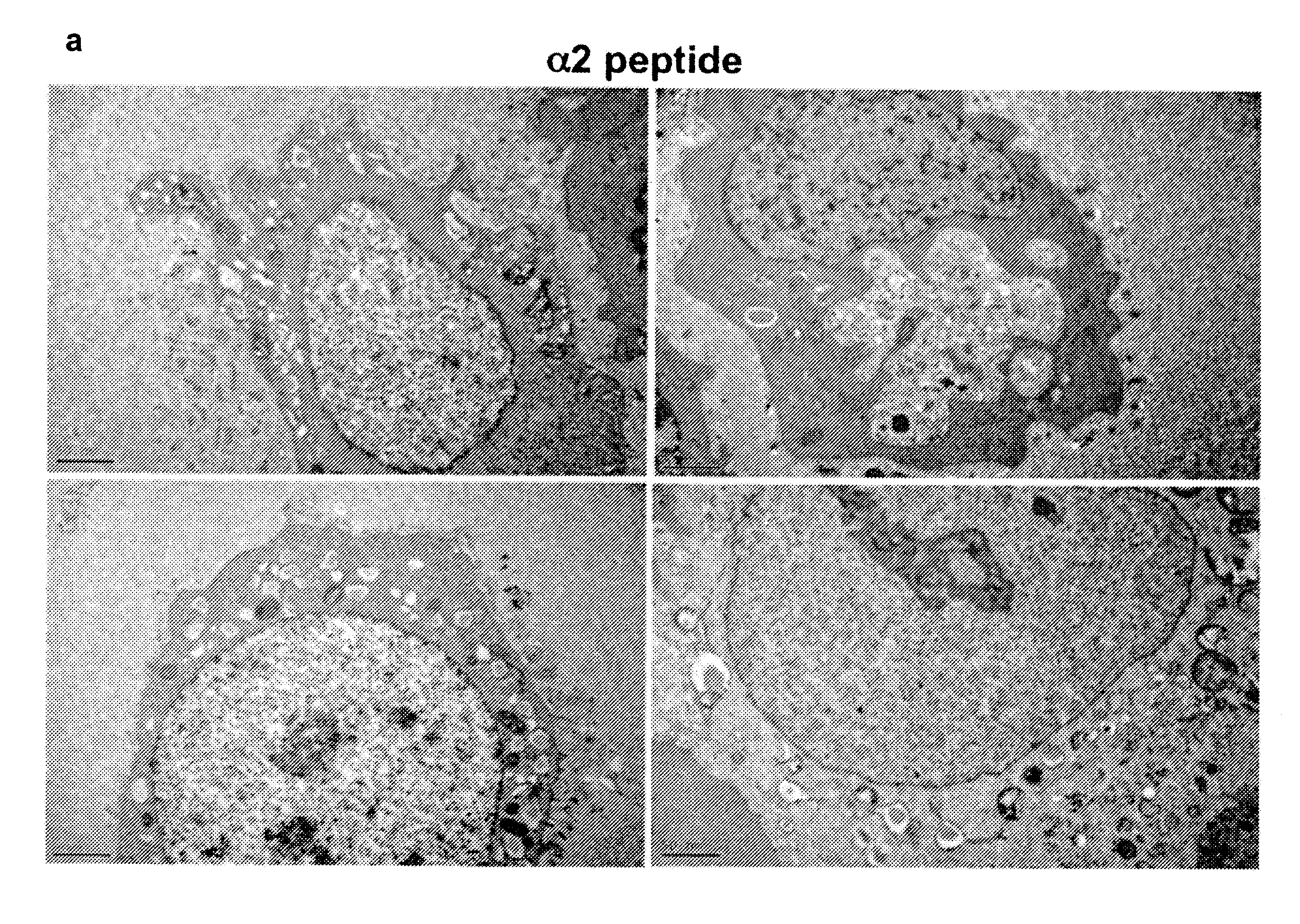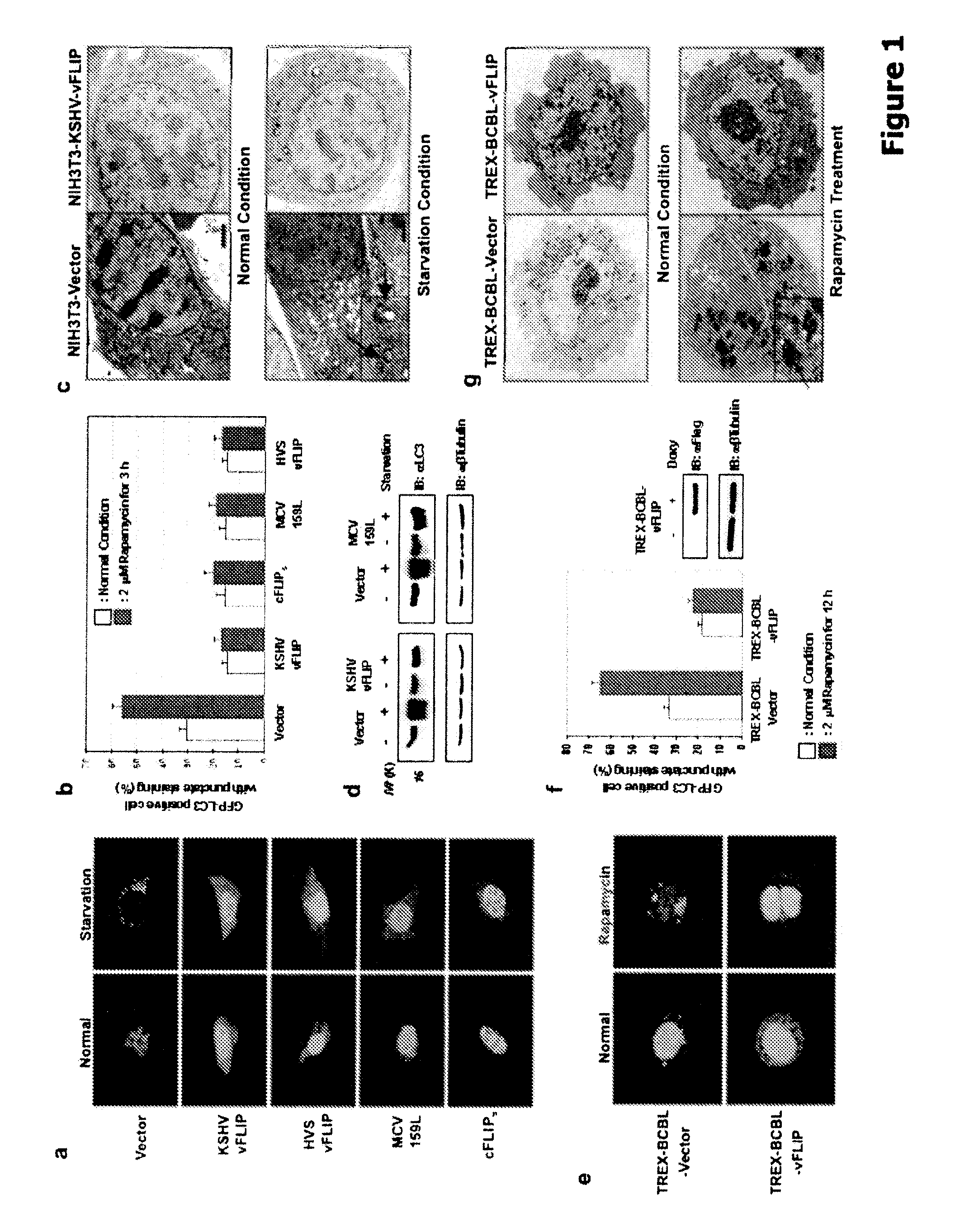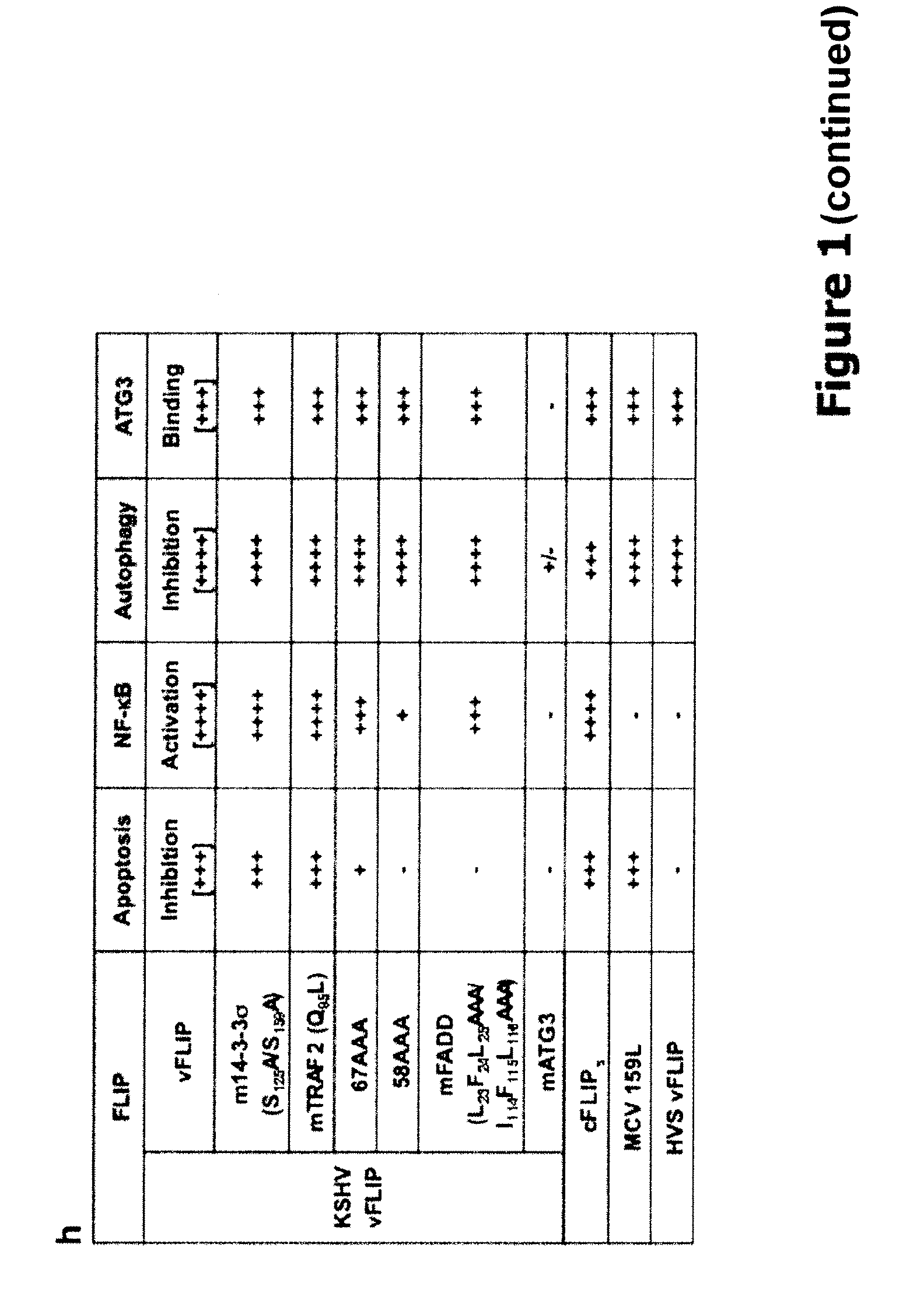Highly Potent Peptides To Control Cancer And Neurodegenerative Diseases
- Summary
- Abstract
- Description
- Claims
- Application Information
AI Technical Summary
Benefits of technology
Problems solved by technology
Method used
Image
Examples
descriptive embodiments
Isolated Peptide Fragments and Compositions
[0097]This invention provides isolated peptide fragments of vFLIP and cFLIP proteins that inhibit or diminish the ability of cFLIP or vFLIP to bind to Atg3 and inhibit formation of the LC3-Atg4-Atg7-Atg3 conjugation complex that is necessary for autophagy induction. The peptide fragments are useful therapeutically to augment or promote autophagy in a cell, tissue or subject. They also inhibit the growth of precancerous cells, malignant tumors and cancer cells, increase or induce cancer cell death, eliminate viral particles associated with a viral infection, and / or treat or ameliorate neurodegenerative diseases by inducing or increasing autophagy.
[0098]Thus, in one aspect this invention provides an isolated peptide fragment comprising, or alternatively consisting essentially of, or yet further consisting of, a region of the vFLIP or cFLIP protein that binds to Atg3, or a portion thereof. Examples of these fragments are identified in SEQ ID N...
experimental examples
Example 1
FLIP Suppresses Autophagy
[0251]To identify additional anti-autophagic viral proteins, a KSHV expression library was screened by evaluating a GFP-LC3 staining pattern. Autophagic stimulation was induced, and candidate proteins were identified on the basis of exhibiting a redistribution of GFP-LC3 staining, from a diffused staining pattern throughout the cytoplasm and nucleus to a cytoplasmic punctate structure specifically labeling preautophagosomal and autophagosomal membranes. (Mizushima et al. (2004) Mol. Cell. Biol. 15:1101-1111). The screen identified that vFLIP (also called K13) effectively suppressed starvation- and rapamycin-induced autophagy, evidenced by the reduction of GFP-LC3 puncta (FIG. 1A-B).
[0252]The anti-autophagic properties of vFLIP, as well as the related cFLIP, HSV, and MCV, were evaluated by ectopic expression of HVS, vFLIP, MCV 159L, and the short form of cFLIP (cFLIPs) in NIHI3T3 cells. DNA fragments corresponding to the coding sequences of the KSHV-...
example 2
[0258]FLIP Interacts with Atg3
[0259]To identify cellular targets of KSHV-vFLIP specifically pertaining to its anti-autophagic activities, a yeast two-hybrid screen using a cDNA library from EBV-transformed human B-lymphocytes was performed. Yeast transformations with a cDNA library were performed using a method previously described. (Liang et al. (2006) Nat. Cell Biol. 8:688-699). Yeast strain Y187 bearing the Ga14-vFLIP fusion gene plasmid was grown overnight in synthetic dropout (SD) / -Trp medium to a density of approximately 107 cells / ml, then diluted in 1 liter of warmed YPD to an optical density (OD600) of 0.2-0.3, and grown to an exponential stage. The cells were harvested and washed twice with 100 ml of water and once with TE (Clontech). The pellet was resuspended in 8 ml of 10 mM Tris-HCl (pH 7.5), 1 mM EDTA, and 0.1 M Li-acetate (LiOAc). The suspension was then mixed with 1 mg of transforming DNA and 20 mg of single-stranded salmon sperm DNA, after which 60 ml of a solution ...
PUM
| Property | Measurement | Unit |
|---|---|---|
| Fraction | aaaaa | aaaaa |
| Fraction | aaaaa | aaaaa |
| Molar density | aaaaa | aaaaa |
Abstract
Description
Claims
Application Information
 Login to View More
Login to View More - R&D
- Intellectual Property
- Life Sciences
- Materials
- Tech Scout
- Unparalleled Data Quality
- Higher Quality Content
- 60% Fewer Hallucinations
Browse by: Latest US Patents, China's latest patents, Technical Efficacy Thesaurus, Application Domain, Technology Topic, Popular Technical Reports.
© 2025 PatSnap. All rights reserved.Legal|Privacy policy|Modern Slavery Act Transparency Statement|Sitemap|About US| Contact US: help@patsnap.com



